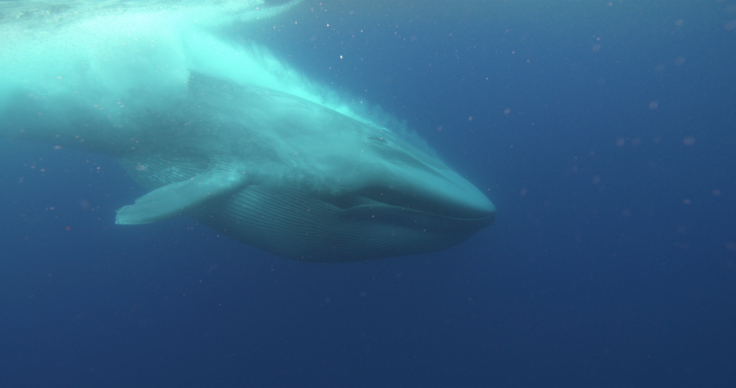Whales Became Giants Recently, In Evolutionary Terms, Shaped By Changing Food Supply

The largest living vertebrate mammal on Earth today, the blue whale, can grow to over 100 feet in length, and other baleen whales grow up to massive sizes as well. But these gigantic creatures weren’t always so big, and evolved to their enormous forms quite recently, in evolutionary terms.
A new study, to be published Wednesday in the journal Proceedings of the Royal Society B, researchers traced the evolution of whales through 30 million years, and discovered that large whales in several branches of the whale family tree appeared around the same time two to three million years ago. They also found that whales longer than about 10 meters (33 feet) first evolved only about 4.5 million years ago.
Read: Mysterious Sound From Mariana Trench Likely A Baleen Whale Call
Nicholas Pyenson, curator of fossil marine mammals at the Smithsonian’s National Museum of Natural History in Washington, D.C., Graham Slater at the University of Chicago and Jeremy Goldbogen from Stanford University collaborated on the study, which was made possible because of the Smithsonian’s vast collection of skulls from both living and extinct baleen whales.
However, interpreting incomplete fossil records is a challenge that the researchers had to overcome.
“We haven’t had the right data. How do you measure the total length of a whale that’s represented by a chunk of fossil?” Pyenson said in a statement Tuesday.
But he provided a solution himself recently, when he established that the width of the skull was a reliable indicator of the overall body size of a whale. By taking the measurements of a large number of skulls in the museum’s collection, the researchers established the length of 63 extinct whale species, going back to the earliest baleen whales from over 30 million years ago, and found that none of the species was as big as they are today.
“We live in a time of giants. Baleen whales have never been this big, ever,” Goldbogen said in the statement.
There was a shift about 4.5 million years ago, when smaller species of whales began to disappear and whales larger than 33 feet started showing up. That led to the question of why this shift happened at that time.
Articulating that question, Slater said: “We might imagine that whales just gradually got bigger over time, as if by chance, and perhaps that could explain how these whales became so massive. But our analyses show that this idea doesn’t hold up — the only way that you can explain baleen whales becoming the giants they are today is if something changed in the recent past that created an incentive to be a giant and made it disadvantageous to be small.”
The time of the shift corresponds to the beginning of the Ice Ages. Before the Northern Hemisphere began getting covered in ice sheets, whales must have had access to food resources almost evenly distributed through the world’s oceans. When glaciers would run off seasonally, krill — the prey that baleen whales eat by filtering out of water — would be concentrated at the coastal spots where the runoff happened. And the researchers think whales’ foraging would be more efficient if they had larger bodies.
Additionally, the larger bodies also allowed whales to swim long distances seasonally, to reach areas with dense krill concentrations.
© Copyright IBTimes 2024. All rights reserved.











